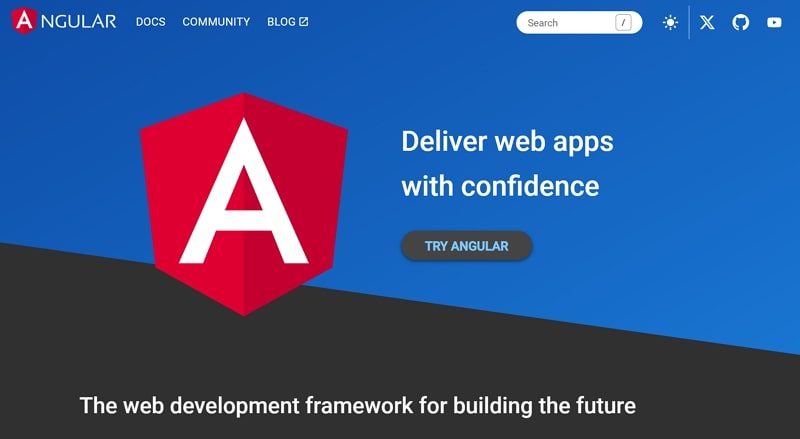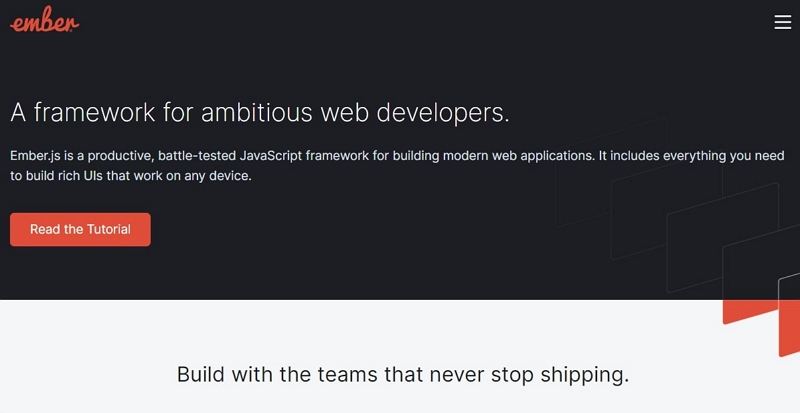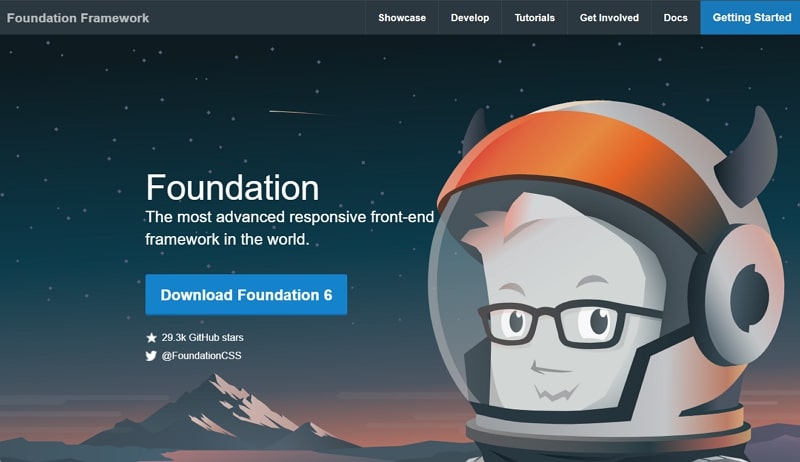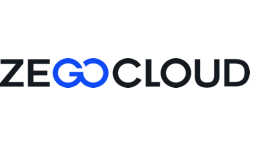The internet’s evolution has changed how we interact with applications and websites, leaving the era of static web interfaces behind. Now, engaging and dynamic user interfaces are used to grab the most traffic on web apps, creating the need for front-end developers. It leads to front-end frameworks, which facilitate effortless and consistent development of user interfaces in websites/apps. Read this guide to explore the best front-end frameworks and every single detail related to them.
What is a Frontend Framework?
Developing customized widgets that appear on the interface of web pages or applications is a task of the front-end developers. However, developing codes for every task is a lengthy process that sometimes gets complex. For easier developing processes, frontend frameworks have been introduced to provide you with pre-built templates for UI/UX development.
These front-end frameworks offer ready-to-use building blocks like buttons, menus, and layouts to create a visually appealing interface. Moreover, a powerful framework will allow you to focus on making the website functional and hassle-free. If you have some know-how in programming languages like JavaScript, you can also easily use these frameworks and develop creative web pages.
The State of Best Frontend Frameworks
It is necessary to pick the best front-end framework that best suits your requirements and is worth spending time or budget on. Therefore, you should review the framework characteristics below when choosing a front-end framework for your project.
- Availability of Learning Resources: If you want to use the front-end framework accurately, choose one that provides learning resources. With this, you can understand its features and the usage of ready-made components for effective use and solutions when facing issues.
- Flexibility and Customization: To add multiple functions to your web applications, you should consider a framework that provides flexibility in using components. Thus, modifying, changing, and customizing the user interface according to your requirements will be easy and effortless.
- Ease of Integration: If you already have an application and want to add a feature to it, you need an easy-to-integrate framework like ZEGOCLOUD. For this reason, you should consider the framework, which can quickly integrate into the application and other libraries.
- Responsive Features: Consider a front-end framework with responsive features for proper alignment and screen layouts. Additionally, you should look for its learning curve, community support, project requirements, and your teammates’ expertise, which vary according to users.
What are the Benefits of Using a Frontend Framework
As a beginner developer, you might be learning to convert concepts into visuals. In that context, you can use front-end frameworks to elevate and speed up your web development projects. If you are new to framework concepts, this section highlights their major benefits to help you extend your knowledge.
- Diverse Functionalities: If you are new to JavaScript and want to make your webpage more appealing, using the front-end framework will help you. These frameworks have libraries and utilities that you can use to make a webpage more functional.
- Reusable Components: You don’t have to create codes for specific tasks repeatedly. With front-end frameworks, you can use reusable components to define the code once and utilize it in multiple parts on different web pages.
- Community Support: Suppose you’re developing an interactive web page, and suddenly you face a bug; it is frustrating to troubleshoot it alone. Thus, front-end frameworks offer an active community with tutorials or online resources to provide solid solutions.
- Time-saving: Developing a web application project is a lengthy task that requires a lot of focus and time. For this purpose, the front-end framework will be your problem-solver, providing you with pre-build templates to streamline your workflow.
Type of Applications You Can Create with a Frontend Framework
According to the capabilities of your chosen front-end frameworks, you can create various types of applications. Whether you need small-scale or large-scale web applications, the choice of framework matters. This part will cover the types of applications that a front-end framework can create so you can choose a suitable framework afterward.
1. Progressive Web Applications
The first is a progressive web application that one can create with front-end frameworks and benefits from an app-like experience when offline or online. They are like websites, which function as mobile applications through mobile-native features without any software download or purchases from stores. Moreover, users can start search engine queries to access progressive apps on their browsers.
2. Dynamic Web Applications
One can also build dynamic applications or websites that constantly update their interface without reloading pages. They can change their locations, language settings, time of the day, or other viewer demographics to elevate user experience. Additionally, they are crucial for businesses focusing on interactive customer experience, where you can count Gmail as an example.
3. Responsive Websites
Front-end frameworks can also create responsive websites that can easily adjust themselves with different screen sizes to ensure an optimal viewing experience. Furthermore, such sites or applications are possible with device detections, adaptive layouts, and media query integration features. In this regard, React and Angular are suitable because of their components, which are easy to modify for devices.
4. Single-Page Applications
SPAs or single-page applications aim to display updated content after loading a single document with JavaScript API. However, they require effort to monitor performance and complexity to implement navigation capabilities.
That’s why developers use ZEGOCLOUD APIs, which are easy to integrate and provide an engaging user experience. The reason is that it offers pre-designed 20+ UIKits, which proves developer-friendly, intuitive, and time-saving.

The 10 Most Popular Frontend Frameworks: Expert Picks
After learning about front-end frameworks, their benefits, and the types of applications you can build, you must be familiar with their basic concepts. Now, let’s uncover the ten most popular front-end frameworks to streamline your website or application development journey.
1. React

The first framework that comes to the minds of developers for front-end frameworks is React, developed by Facebook. It is considered a popular front-end framework for building complex and larger web applications because of its high performance and flexible features. Additionally, it is recognized for its Virtual Document Object Model (DOM), which enhances the workflow of both developers and users.
Pros
- This front-end framework offers extensive tools, third-party libraries, and excellent community support.
- React provides a syntax extension called JSX that allows you to write HTML-like code in JavaScript.
Con
- Some new developers reported about the significant learning curve and complexities of JSX.
You may also like: Next.js vs React: What are the Differences?
2. Angular

Compared to React, Angular is based on TypeScript, which was established by Google in 2016 with two-way data binding. This open-source front-end developer framework is known for its robust security features and high scalability. Besides, it can deal with single-page and enterprise-level applications with real-time model-view synchronization. It also breaks down a web application into multiple reusable components with its component-based architecture for better reusability and maintenance.
Pros
- Angular is a comprehensive framework that eliminates the need to rely on third-party tools or libraries.
- Also, Angular Material allows you to reorganize Material Design interface production with ease.
Con
- Along with undefined CLI documentation, dynamic applications created through Angular may show lags.
3. Ember.js

It’s a battle-tested JavaScript framework that is used to develop a modern web application that works on all devices. This web front-end framework has a robust CLI for managing dependencies and generating codes while adhering to the MVVM architectural pattern. Furthermore, it has a URL-focused approach, two-way binding, consistent documentation, and native testing/debugging tools.
Pros
- This framework has a widget-based approach to components and supports TypeScript and JavaScript.
- It has an ever-evolving community, which means frequent improvements and the release of new features.
Con
- Ember.js is not suitable for building small applications, and several users report about its limited customization.
4. Vue.js

Compared with Angular, this progressive front-end framework is straightforward and lightweight for building user interfaces. It also employs two-way data binding, component-based programming, and visual DOM for developing small and dynamic web applications. Overall, startups or freelance developers prefer this front-end framework for interactive UI elements because it’s great for testing the market with an MVP.
Pros
- It has an MVVM architecture for handling HTML blocks and plenty of documentation sources.
- Moreover, it offers simple integration and code reusability to save developers time in coding.
Con
- This framework can show code irregularity and low developer community, which means you can’t take enough guidance if you face any issues.
5. Svelte

If you wish to build a small web application quickly, this frontend framework will prove a great choice regardless of the unavailability of virtual DOM. Besides, it uses JavaScript libraries and works as an SEO-optimized framework, which has minimal coding with feature-focused architecture. It employs a specialized JavaScript Virtual Machine to create modern interfaces with better reactivity and scalability.
Pros
- This component-based framework is highly optimized and runs faster than other front-end frameworks.
- Additionally, it’s modular, which helps developers write components like JS, HTML, and CSS.
Con
- As it is a less popular framework, it has a limited ecosystem, technical support, and tutorials.
6. Backbone.js

Another open-source framework is Backbone.js, which is designed to create single-page web apps with minimum coding. Notably, it keeps the apps’ user interface logical and separated while providing various models with customized events and key-value binding. Also, it has libraries of APIs, including functions, views, and declarative event handling.
Pros
- It’s the best front-end framework that communicates well with API through a RESTful JSON user interface.
- Backbone.js has well-organized and in-depth tutorials, which makes this framework easier to understand.
Con
- This framework doesn’t support two-way binding data and requires extensive coding from developers.
7. Semantic UI

Semantic UI is a free, open-source framework that contains over 50 pre-built UI components to build a site with a single UI stack. In addition, this front-end framework aims to develop responsive, beautiful, and accessible user interfaces for all operating systems. It has toolsets that provide configuration of themes like JavaScript and CSS with simple and organic codes.
Pros
- It is vital for medium-sized applications, websites, and intuitive user interfaces.
- This framework has codes that are created once but can be used and shared with several applications.
Con
- Along with fewer updates, this framework requires proficiency for building custom configurations.
8. Foundation

In the realm of advanced front-end frameworks, Foundation Framework is considered advanced and responsive. This framework aims to create attractive websites, emails, and apps for all devices while adding new code snippets and resources. Apart from that, it has a component-based architecture, grid system, and cross-browser compatibility while offering an HTML5 form authentication library.
Pros
- It can build mobile-friendly applications and sites and then add a layer of complexity for complete design.
- This framework also offers GPU acceleration for swift mobile rendering, data-interchange attributes, and smooth animations.
Con
- Foundation Framework contains a heavyweight codebase that pushes developers toward learning it thoroughly for usage reasons.
9. Preact

Developers looking for the fastest virtual DOM library should try the Preact front-end framework, which can be used without transpiring. It can be counted as an alternative to React because it offers a similar 3kB API and features but with a smaller codebase. Moreover, this lightweight front-end framework works with JavaScript and is designed to maximize memory usage.
Pros
- This popular front-end framework also provides the thinnest DOM abstraction and builds on stable platform features.
- Preact demands less JavaScript to download and execute, which means you can write your codes without fighting to keep the framework under control.
Con
- Conversely, it lacks official documentation, support for the context, and synthetic event use.
10. Next.js

End your search to discover the best front-end frameworks, as Next.js is a comprehensive solution. It can create high-quality web application interfaces with React component support and features like dynamic HTML streaming and client and server rendering. Additionally, this framework can quickly create single-page web applications and complex web app interfaces with built-in routing capabilities.
Pros
- It aims to facilitate the efficient development of dynamic interfaces with the declarative nature of react components.
- Besides, it has a modular nature of React Components, which allows developers to reuse and promote a maintainable codebase.
Con
- There are no built-in front pages in Next.js, which means you have to build everything from scratch for your web app.
You may also like: Top 10 Next.js Alternatives You Can Try
Integrating Frontend Frameworks with ZEGOCLOUD for Enhanced Real-Time Communication Apps
If you are trying to design a communication application or website with front-end frameworks, there is a way to take them to the next level. To do so, you should learn about ZEGOCLOUD’s video call APIs & SDKs, chat APIs & SDKs, and live streaming APIs & SDKs, which can improve user experience. Notably, it has more than 50+ pre-built UI components that help developers create an engaging app with a few lines of code.

Such ready-made UI components can design feature-rich apps quickly without any divide and network limitations. Moreover, ZEGOCLOUD APIs provide crystal-clear and high-quality video to uplift users’ communication experience.
Overall, the user-friendly APIs of ZEGOCLOUD focus on revenue generation for businesses while offering effortless app design, development, and testing. Additionally, it has cloud recording, AI effects, and super board, which are easy to integrate into web apps.
Conclusion
Let’s end the discussion as this guide highlights the industry-leading front-end frameworks to help developers in website or app development. Besides, we covered everything you need to know about front-end development frameworks since you are new to programming. To build an engaging and attractive communication app or website, you should use ZEGOCLOUD’s APIs and SDKs.
Read more:
Let’s Build APP Together
Start building with real-time video, voice & chat SDK for apps today!










